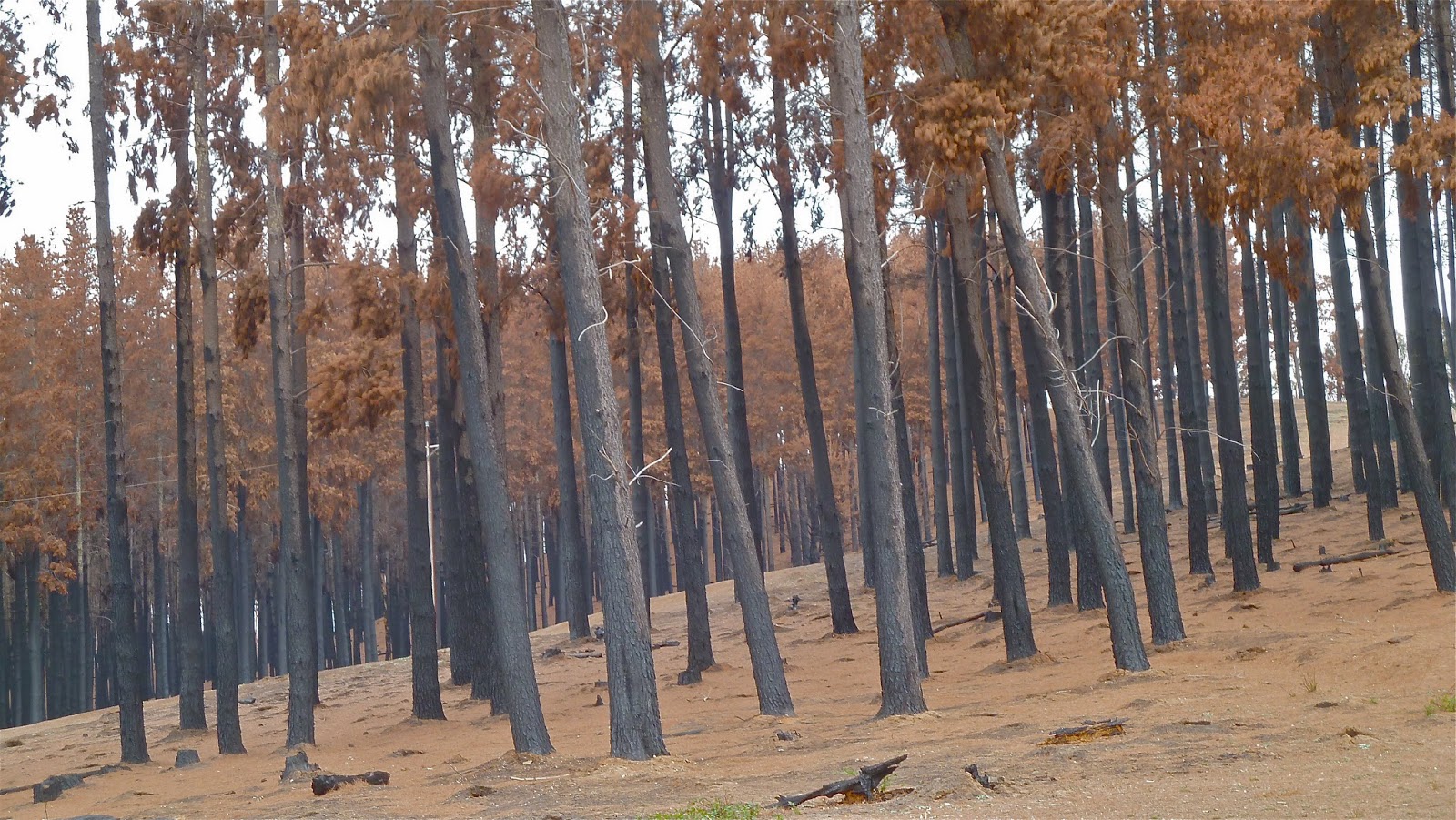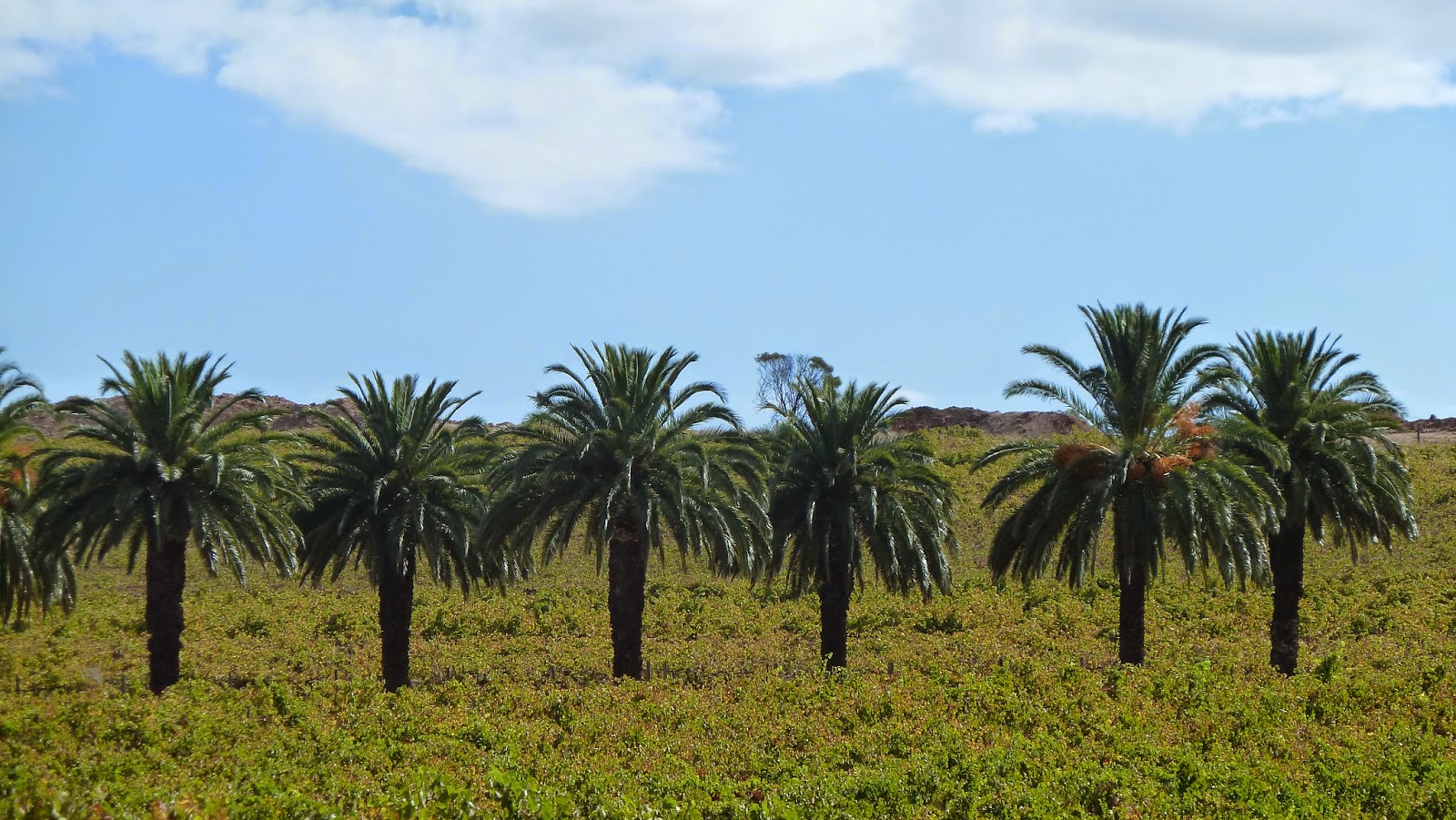 |
| Courtesy of Kim Maute, BTFRT* |
BTF builds nests in hollow branches or tree forks, but may also use tall grass or even old nests that once belonged to Babblers or Diamond Firetails. BTF nests are made of grass, and are oval-shaped with a spout-like entrance; and some are built for roosting rather than breeding. The bird is partial to the Silver-Leafed Ironbark for nesting, but this tree is slow growing, taking 200 years to reach maturity since it only grows significantly in wet La Niña years. (Difficult to offset, right?)
Four years of study has been done since Adani's Carmichael mine in the Galilee Basin was first proposed in 2010. Since an Environmental Impact Statement was produced in 2012, the significance of the area as the last bastion of the Black-throated Finch (southern) has become more apparent. A James Cook University PhD student, Stanley Tang, observed 400 BTFs at Ten Mile Bore on Moray Downs property (within the mine site) in September 2013, and this is now acknowledged to be the main surviving population** of BTF. This core population is essential for the species' continued survival, and it services surrounding smaller satellite populations. An endangered species, BTF had to be impact-assessed under the Environment Protection and Biodiversity Conservation Act.
How do we know whether there are any BTF there at all? Or how many? Surveying techniques for locating birds are many and various. You can do a waterhole watch, preferably at sun-up or late afternoon; walk a transect for a few hours; or drive a transect (BTF often uses grasses alongside tracks); and nest spot in likely woodland. You can sit for hours, or walk for weeks and never see what you're looking for. Or you can be in the right spot at the right moment when a large flock comes to drink.
Both expert witnesses in the Land Court agreed that there was a paucity of baseline data for both impact statements and potential offsetting; that field surveys could have been better managed; and that ecological equivalence methodology was not sufficiently robust. They were also in agreement about the degree of harm that would be done to this critical BTF habitat were it to be cleared or disturbed. BTF will be dispersed, with these possible outcomes:
1 BTF will not find a suitable replacement habitat and will die
2 BTF will find a suitable habitat already occupied by BTFs and without the carrying capacity for more, so the birds will be further displaced or will die
3 BTF will find a suitable habitat already occupied by BTFs, the latter of which will be replaced and dispersed
4 BTF will find a suitable habitat with no or few other BTFs so there will be capacity for a larger population.
Number 4 has to happen if there is to be no net loss of ecological value. Unless there is suitable BTF habitat close by, then there is a higher probability of 1 to 3.
Regional ecosystem mapping was use to identify possible BTF habitat within assessment units of eucalypt woodland and mixed species grassland, and to assess potential offset areas. BTF doesn't like Brigalow, Lancewood or Gidgee; or Buffel grass. A thick tangled understorey doesn't suit, either. The birds' specific preferences were not mapped. So, eight species of grass were searched for, even though BTF probably has four favourites. A broad analysis was not good enough for such an important BTF population. Ecologist Dr Lindsay Agnew (for Coast and Country) was surprised that Adani's habitat specialist hadn't consulted a biologist for a project of this significance.
Given that BTF is bound to be adversely impacted, a Biodiversity Offset Strategy (BOS) has to be implemented. Surely Adani's BOS has be revised, following further research. Even if you accept the principle of offsetting to compensate for landscape obliterated and species dispersed, there are still significant problems with such a plan:
1 Time lags. In the Carmichael BOS as it currently stands, offsetting management (removing cattle, removing ferals, controlling weeds (Buffel), providing water sources) commences only a couple of months before the first phase of mining. If sites aren't prepared for BTFs to take up residence, then the birds' survival will be severely compromised.
2 Security. An offset area must be legally secured for the duration of the mine. Nature Refuge status was mentioned, for example. But that's a joke. Just 100 kilometres or so southwest of Carmichael is Bimblebox Nature Refuge, a high-conservation-value site that is currently under threat from Waratah Coal's plans to mine. If a Carmichael offset area is outside this mining lease but within another, then it's feasible another mining company would be required to offset the offset at some point, which is ludicrous.
3 Management review. This takes place a year after the mine has been operational. BTF could be long dead in its offset area – if, in reality, it ever went there.
During three absorbing days of BTF evidence and cross-examination last week, one extraordinary claim stood out. Adani's lawyer argued, and was backed up, if a tad reluctantly, by his ecologist expert witness, that the Carmichael mine would be good for the Black-throated Finch. In a no-mine scenario, the land would continue to be degraded in various ways and the southern sub-species of BTF would be further squeezed out of its Central Queensland range. With offset areas necessitated by the mine, however, the species' survival would be managed and much more likely in an 'additionalised'† habitat.
The experts knew of no example of the successful offsetting of a bird in this way.
The demise of the southern species of BTF has been described as 'death by 1000 cuts'. Anthropogenic impact, pastoral practices, the invasion of exotic plants and feral animals have all taken their toll, gradually reducing BTF's range to this main pocket that now lies in the path of probably the most destructive force of all. At times during the case I dared to hope that something must and will be done to save BTF, and that it will be the vanguard of a new and powerful government commitment to protect Australia's landscape and biodiversity. But there usually follows a reality check in the form of market forces and royalties and reduction of state debt; otherwise known as greed.
We shall see.
* Black-throated Finch Recovery Team. See http://www.blackthroatedfinch.com for how to help
** previously the largest population was believed to be one near Townsville
† in biodiversity offsetting the term additionality describes a conservation outcome that is demonstrably new and additional and would not have resulted without the offset





















































































